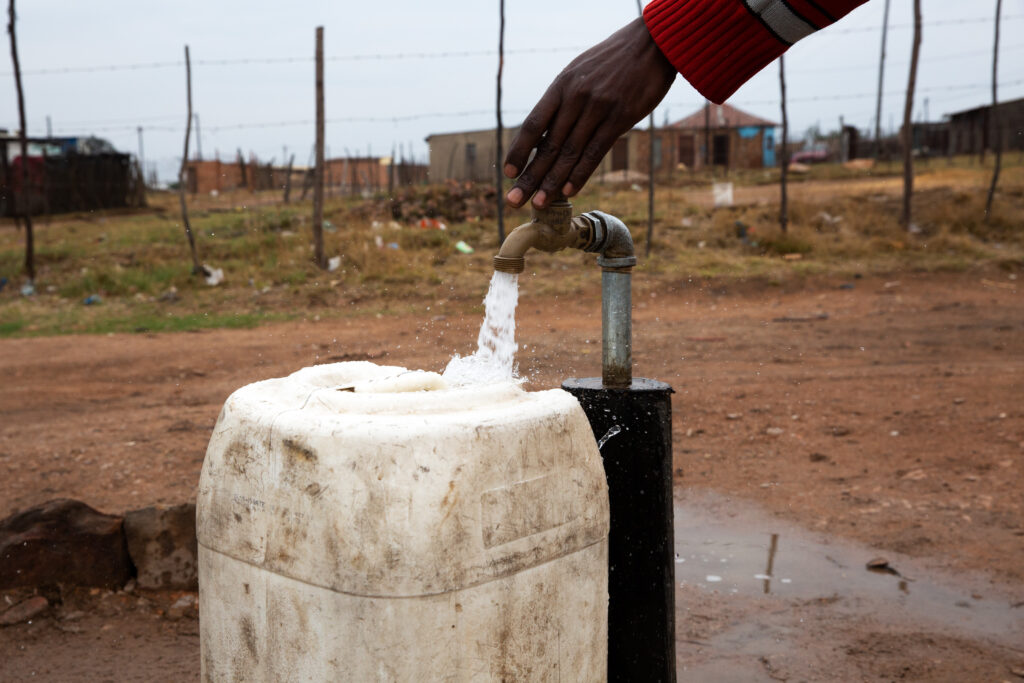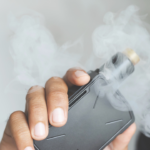- The germ that causes cholera hasn’t been found in taps in the Pretoria township Hammanskraal, but it has been detected in a river that feeds into the dam that supplies the settlement and could be in a sample from a spruit that vegetable farmers use for irrigation.
- These findings are from an expert investigation into the cause of the large cholera outbreak in the area in May, released on Wednesday.
- Their report says wastewater treatment works that don’t work have to be “refurbished and recommissioned urgently”. But whose responsibility is it?
Vibrio cholerae, the germ that causes cholera, hasn’t been found in the drinking water of the Pretoria township Hammanskraal, but a form of the germ has been detected in a water sample from the Kaalplaasspruit irrigation water point, which a pea farm in the area uses. The spruit flows into the Apies River, which feeds into the Leeukraal Dam, the main water source of the settlement.
The finding was made by the Water Research Commission (WRC), which the department of water and sanitation asked to investigate what caused the large cholera outbreak in the township in May, a month in which at least 23 residents died after being infected with the bug.
Cholera has spread to six provinces in South Africa with a total of 199 confirmed cases and 47 deaths — most of them in Gauteng.
The WRC’s findings were released on Wednesday, but the full report will only be available once the Minister of Sanitation and Water Affairs, Senzo Mchunu, has signed off on it.
Cholera is a disease that can cause watery diarrhoea, thirst and vomiting. Most people don’t get very sick, but for one in 10, the disease is serious and can lead to death.
People get cholera when they eat food or drink water that has been contaminated with the germ which causes it. The bug normally hitches a ride in faeces, which, if it spills into water, infects it. If that water is then used to irrigate crops, the produce gets polluted and people who eat the vegetables can get sick.
[WATCH] How does cholera spread?
A spruit, sprinklers and samples
One sample from the Apies River also tested positive for V. cholerae, and specifically for a form of the bacterium that releases toxic chemicals that make you ill. The sample from the Kaalplaasspruit irrigation point has been sent to the National Institute for Communicable Diseases (NICD) for testing, but it’s not yet known if the germ found in this sample is also of the toxin-producing type.
A burst sewage pump was, however, found in the spruit, and “the presence of Salmonella and Shigella” and “extremely high concentrations of E. coli” were also found in the Apies River. Salmonella, Shigella and E. coli (short for Escherichia coli) are all types of bacteria that live in mammals’ guts and can cause a runny tummy, vomiting and stomach cramps in people who come in contact with faeces, such as when sewage flows into a water source that supplies water for human use.
“This is a big challenge for farmers, and especially for smallholder farmers,” says Erika du Plessis, a senior researcher in Food Safety at the University of Pretoria. “It creates a negative image to the outside world. Can we produce safe food? That’s a question that’s raised in Hammanskraal.”
Du Plessis says her university has, in addition to the pea farm, identified two smallholder farmers and two larger farms that could be at risk of contaminated crops, and as a result, be unable to sell their produce.
The University of Pretoria is one of six expert groups who helped with the WRC investigation. The other five include an advisory panel made up of microbiologists and epidemiologists, scientists from the NICD and the health department, Cubic M Africa, who are water and sanitation consultants, the engineering firm, Virtual Consulting Engineers, and a group of accredited water labs.
Du Plessis says sewage has been flowing into the Kaalplaasspruit for the past two months. “The farmers are desperate. When we went there the first time, a month ago, it was still looking fairly good. But now it’s black; it looks like sewage water.”
“The farmers are frantic, they are beyond themselves.”
Spread the word, not the germ
The E. coli concentrations in the Apies River also exceeded the “target range” for South Africa’s quality guidelines for direct contact with water for recreation, cultural or religious use (for instance, for baptism) and is dangerous to use for Hammanskraal residents because it can make them sick.
Although the investigation couldn’t confirm whether water was the source of the cholera outbreak, it did confirm that conditions in the township make it easy for the disease to spread.
There are, for example, plenty of blue-green algae and water hyacinth growing in the Leeukraal Dam and Pienaars River. “[These organisms] are both carriers of cholera, because the bacteria like to attach to them,” Eunice Ubomba-Jaswa, research manager at the WRC, explained.
There are also many illegal dumping sites and sewer overflow in the township. “Some sites had nappies, which means a high possibility for faecal contamination,” Ubomba-Jaswa said.
Moreover, most of the water treatment plants serving the township (which have to clean river water so that it’s safe for drinking), specifically the Temba Drinking Water Treatment Plant, don’t clean water properly. Temba’s water did not meet drinking water standards.
The investigation found that water discharged from wastewater treatment plants in the area (which are meant to clean used water from our homes so that it can be pumped back into rivers) “didn’t meet standards for release”. Both the Temba Wastewater Treatment Plant and three Rooiwal Wastewater Treatment Plants were out of order.

One way to prevent cholera from being passed on from one person to another is to wash your hands after using the toilet. But because the township doesn’t have enough running water, toilets often can’t be flushed and pit and chemical toilets have no handwashing facilities. “That means that if people have diarrhoea, they can’t wash their hands immediately, because taps are often far from the toilets,” Ubomba-Jaswa said.
Some people get water from tankers. Having to store this water at home increases the risk of contamination, says Ubomba-Jaswa. “If you have cholera present [in an area], it spreads easily. So it’s not just the quality of water that is important, but also the amount of water that the community is receiving.”
Tom Boyles, an infectious diseases expert working for the nonprofit Right to Care, says people can make water safe to drink by boiling it. “This will kill the pathogens [disease-causing germs]. But first, people need to be aware of this. And secondly, they need the fuel and the time to boil water and cool it down before they drink it.”
[WATCH] How to diagnose & treat cholera: A guide for health workers
Can the problem be fixed?
The report recommends that the Temba and Rooiwal plants need to be “refurbished and recommissioned urgently”.
So who’s supposed to fix Hammanskraal’s water?
Technically, all the water in the country belongs to the minister of water and sanitation, says Ayesha Laher, a water scientist and a board member of the Water Institute of Southern Africa.
“Under the National Water Act, the department is the custodian of water in South Africa.” Laher explains that every municipality that is a water service provider authority must, by law, monitor the water quality monthly and provide that information [measurements against certain limits and standards], to the department, who checks if they’re compliant or not.
But, there’s a dilemma, says the WRC’s chief executive officer, Jennifer Molwantwa.
Although municipalities distribute water to the people, so-called local water service authorities, have to oversee this process, according to the Water Services Act. “And unfortunately in South Africa, you find that in most cases, the very municipality that is a water service authority is [also] the water service provider. So who is policing who?”
Read our thread on the WRC report
Additional reporting by Linda Pretorius and Lillian Roberts. Want to know more about the impact of dirty water on your health? Watch Bhekisisa’s monthly TV show, Health Beat, on Sunday, 30 July on eNCA, 3:30pm.
Mia Malan is the founder and editor-in-chief of Bhekisisa. She has worked in newsrooms in Johannesburg, Nairobi and Washington, DC, winning more than 30 awards for her radio, print and television work.







